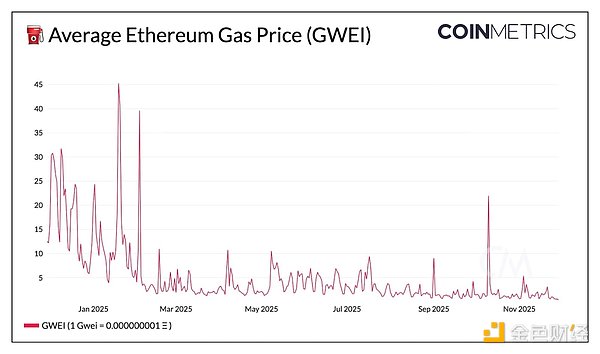Step-by-step guide: How to achieve ultra-high win rates on Polymarket through insider information
Insiders with reliable information help correct pricing errors and indirectly transmit information to others through price movements.
Insiders with reliable information help correct pricing errors and indirectly transmit information to everyone else through price movements.
Written by: The Smart Ape
Translated by: AididiaoJP, Foresight News
How to Find Insiders on Polymarket
Polymarket is a large and rapidly growing market, with trading volume exceeding $15 billions since its launch.

What’s fascinating is that users can profit using many advanced strategies, such as arbitrage, liquidity provision, discount capture, high-frequency trading, and more.
It is still an early and evolving market, now entering the regulatory phase, which means there are still plenty of opportunities.
But there is one method that remains largely underutilized: insider analysis.
Polymarket is an open platform, meaning anyone can create a market on anything. Some markets are entirely based on public information, such as “Who will win the next World Cup?”, while others involve events where a small group of people already know the answer, such as “Who will win the next Nobel Peace Prize?”
In the Nobel Prize market, the committee responsible for selecting the Nobel laureates obviously knows the result earlier than anyone else, and some of them may quietly use this information to trade on Polymarket.
If you can track the movements of these insiders, you can actually bet on the correct outcome with near certainty, because insiders know exactly what will happen.
Another example is “Monad airdrop before October 31.”
The project team and people closely related to the project already know whether it will happen, so anyone who can track these wallets has a huge advantage.

There are several ways to detect potential insider activity.
The simplest method is to use Hashdive(dot)com, currently the best Polymarket analytics tool, which provides extensive metrics and data for each market.
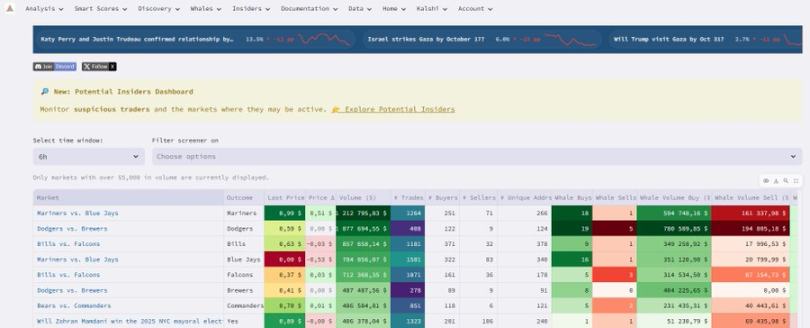
- First, select a market where insider activity may exist, such as the monad airdrop.
- Click into the market, and you’ll see a detailed page with analysis and metrics.
- Scroll down to the “Possible Insider Traders” section.
Let’s take the first trader on the list as an example:
He put in $100,000 betting “No,” and this is the only market he’s trading in.
This is suspicious—a new wallet, putting a large amount of money into a single market.
This person is very likely a member of the Monad team or closely related to them.

The goal is not to focus on a single trader, but to analyze the collective activity of the group.
Some may be genuine insiders, others may just be following the trend—the key is the overall pattern.
In this example, almost all the top traders are betting “No.”
The top eight wallets are all on the same side, each using a new wallet and holding large positions in only one or two markets.
This is a clear signal: insiders seem convinced there will be no Monad airdrop before October 30.
Currently, the “No” side is trading at about $0.83, meaning there is a potential guaranteed return of nearly 17% by October 30.

Some markets do not have a “Possible Insider Traders” section, which is normal.
For example, in the “Bolivian Presidential Election,” there can’t really be insiders, because in a close race, no one truly knows how people will vote.
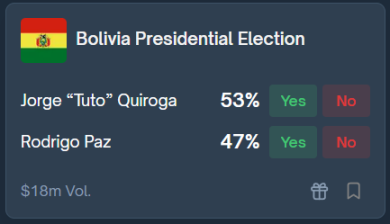
So the key is to choose markets where insider information may exist and track insider movements as early as possible.
The earlier you spot these movements, the higher your potential profit.
If you wait too long, more insiders will enter, prices will move, and your profit margin will shrink.
Your advantage depends entirely on how early you can spot them.
Nobel Prize Case Study
One of the best real-world examples of this strategy is the market:
“2025 Nobel Peace Prize Winner.”
Some traders clearly got the information 9 hours before the official announcement.
Within seconds, Maria Machado’s winning probability jumped from 3.6% to 70%, well before the result was made public.
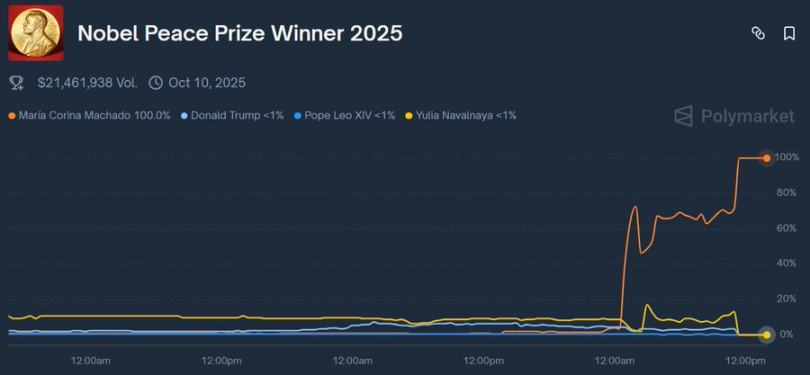
This was clearly the move of insiders—someone leaked the decision in advance.
Some traders made 20x returns, either by following the insider pattern or because they were insiders themselves:
Debased turned $2,500 into $75,000
CannonFodders turned $900 into $30,000
Gopfan2 turned $700 into $26,000
They all entered immediately when Maria Machado’s probability began to mysteriously soar.
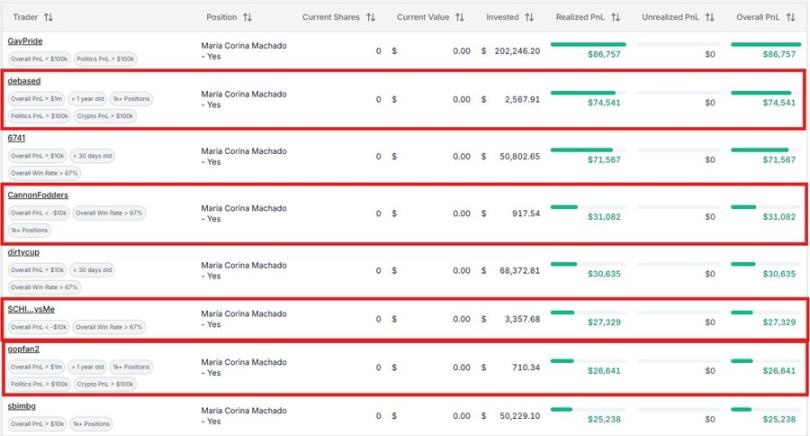
These people could be members of the Nobel committee, people closely related to the committee, or even investigative journalists who discovered the leak.
In any case, the facts are clear: some people had reliable information 9 hours before the official announcement.
When the probability on the Polymarket market jumps from 3% to 70% within minutes, it’s undeniable—insiders are in action.
Norwegian authorities even launched an insider trading investigation into this case.
Reportedly, they focused on wallet “6741,” which bet $50,000 hours before the result was announced.
That wallet only traded once, and only in this market, which immediately drew attention.
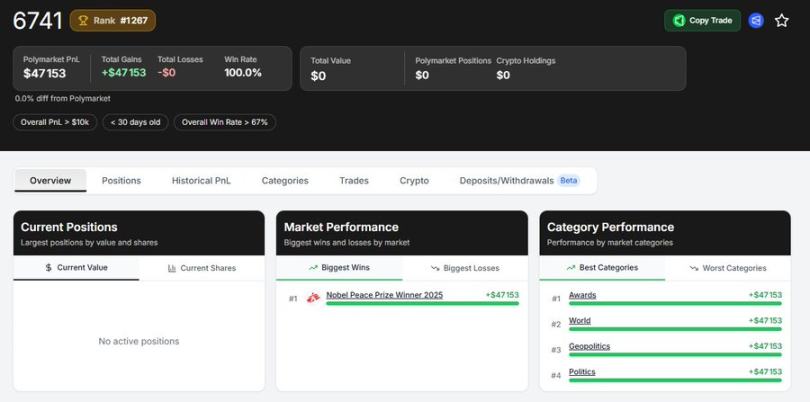
Why Having Insiders Is Actually a Good Thing
At first, you might think insiders are bad for Polymarket, but in reality, they help it achieve its true purpose.
The real mission of Polymarket is not about making or losing money,
but about revealing the collective truth about future events.
The more insiders there are, the more accurate the prices become,
and the more reliable the information the market provides.
Take the Nobel Prize as an example.
I don’t need to wait for the official announcement—Polymarket already told me who the winner is.
In this sense, Polymarket beats all major media to the punch, which is exactly why it’s so powerful.
Insiders with reliable information help correct pricing errors and indirectly transmit this knowledge to everyone else through price movements.
This is an ultra-efficient information dissemination mechanism.
Without insiders, prices only reflect opinions and guesses.
With them, prices reflect hidden but real facts.
This is why some economists, such as the creators of the “prediction market” concept, believe that insider trading is beneficial in this context:
It narrows the gap between belief and reality.
It also creates a truth-incentive system:
If insiders trade based on real information, they profit.
If they are wrong or lie, they lose money.
There is no incentive to spread fake news, because they pay the price for being wrong.
Most importantly, the insiders here do not harm others.
This is not like the token market, where insiders dump tokens on retail traders.
Prediction markets are voluntary, and traders are aware of the risk of information asymmetry.
This is a probability game, not a long-term investment.
Therefore, as long as the rules are clear, insiders can improve the accuracy of predictions without causing systemic unfairness.

Tools to Track Them
Here are some of the most useful tools for analyzing Polymarket data.
This list is not exhaustive—new tools are constantly emerging.
Dune Dashboards: Dozens of Polymarket dashboards, some global (trading volume, users, trades), others specialized (insiders, airdrop trackers, whales, etc.).
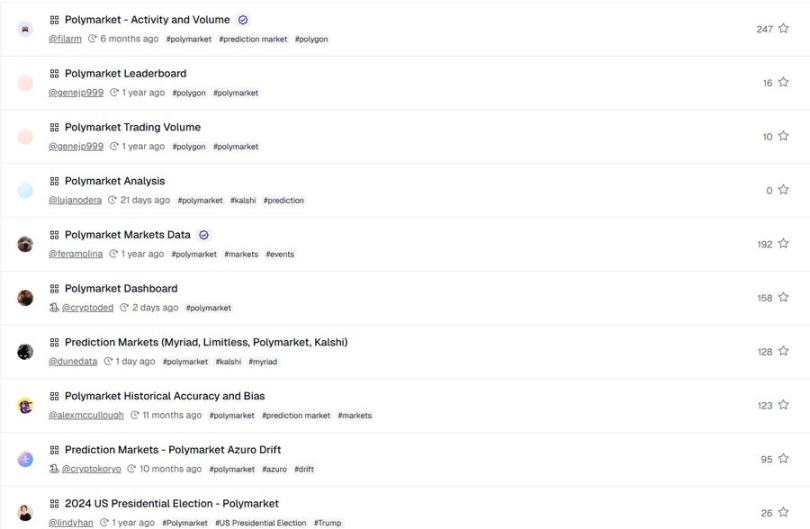
PolymarketAnalytics(dot)com: One of the most comprehensive tools. Allows you to track market traders in real time, discover top alerts, whales, smart money, and analyze performance.
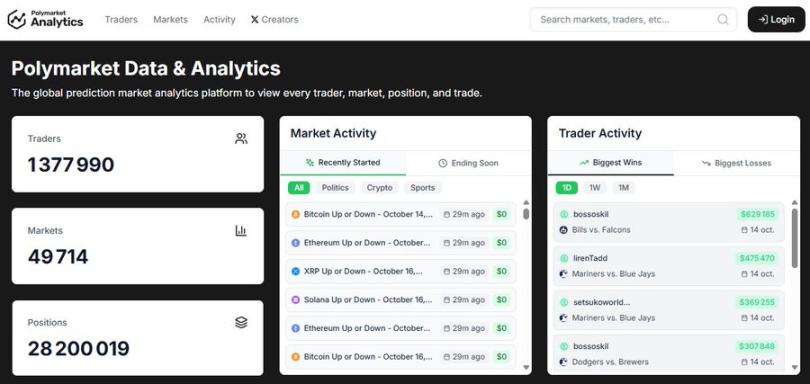
Hashdive(dot)com: Another powerful analytics platform. Each market page contains in-depth metrics, as well as a new “Insiders” section to help you identify potential insider traders.
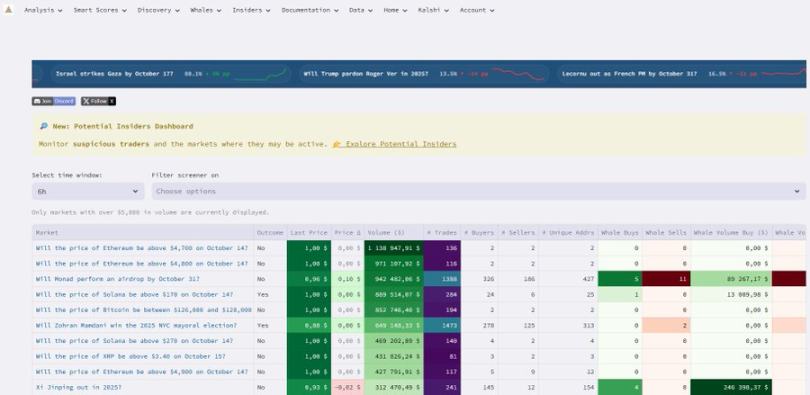
Disclaimer: The content of this article solely reflects the author's opinion and does not represent the platform in any capacity. This article is not intended to serve as a reference for making investment decisions.
You may also like
Did top universities also get burned? Harvard invested $500 million heavily in bitcoin right before the major plunge
Harvard University's endowment fund significantly increased its holdings in bitcoin ETFs to nearly 500 million USD in the previous quarter. However, in the current quarter, the price of bitcoin subsequently dropped by more than 20%, exposing the fund to significant timing risk.

The Structural Impact of the Next Federal Reserve Chair on the Cryptocurrency Industry: Policy Shifts and Regulatory Reshaping
The change of the next Federal Reserve Chair is a decisive factor in reshaping the future macro environment of the cryptocurrency industry.
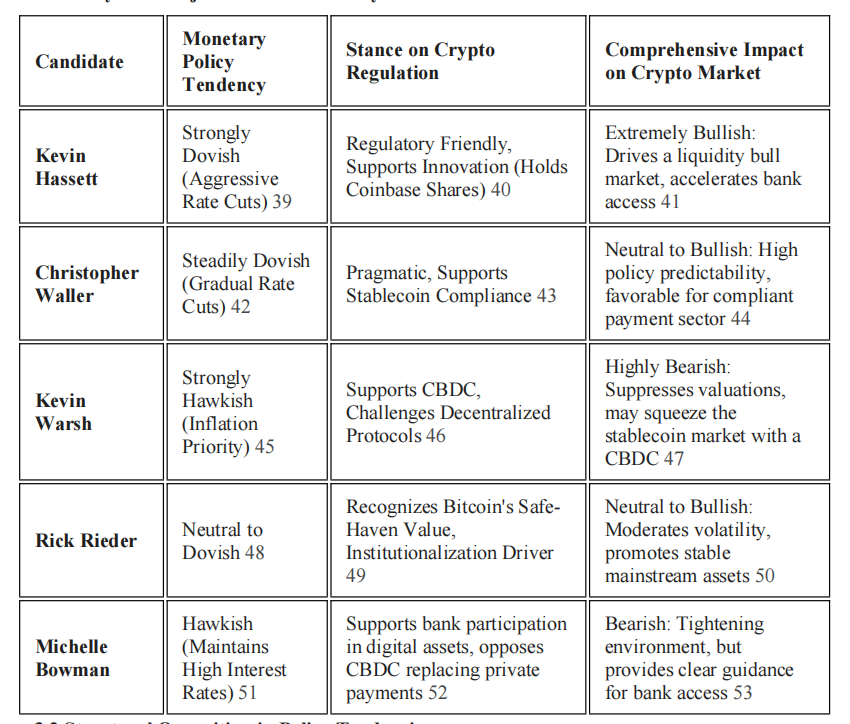
Tether: The Largest Yet Most Fragile Pillar in the Crypto World

In-depth Analysis of the Ethereum Fusaka Upgrade: Core Changes and Ecosystem Impact
